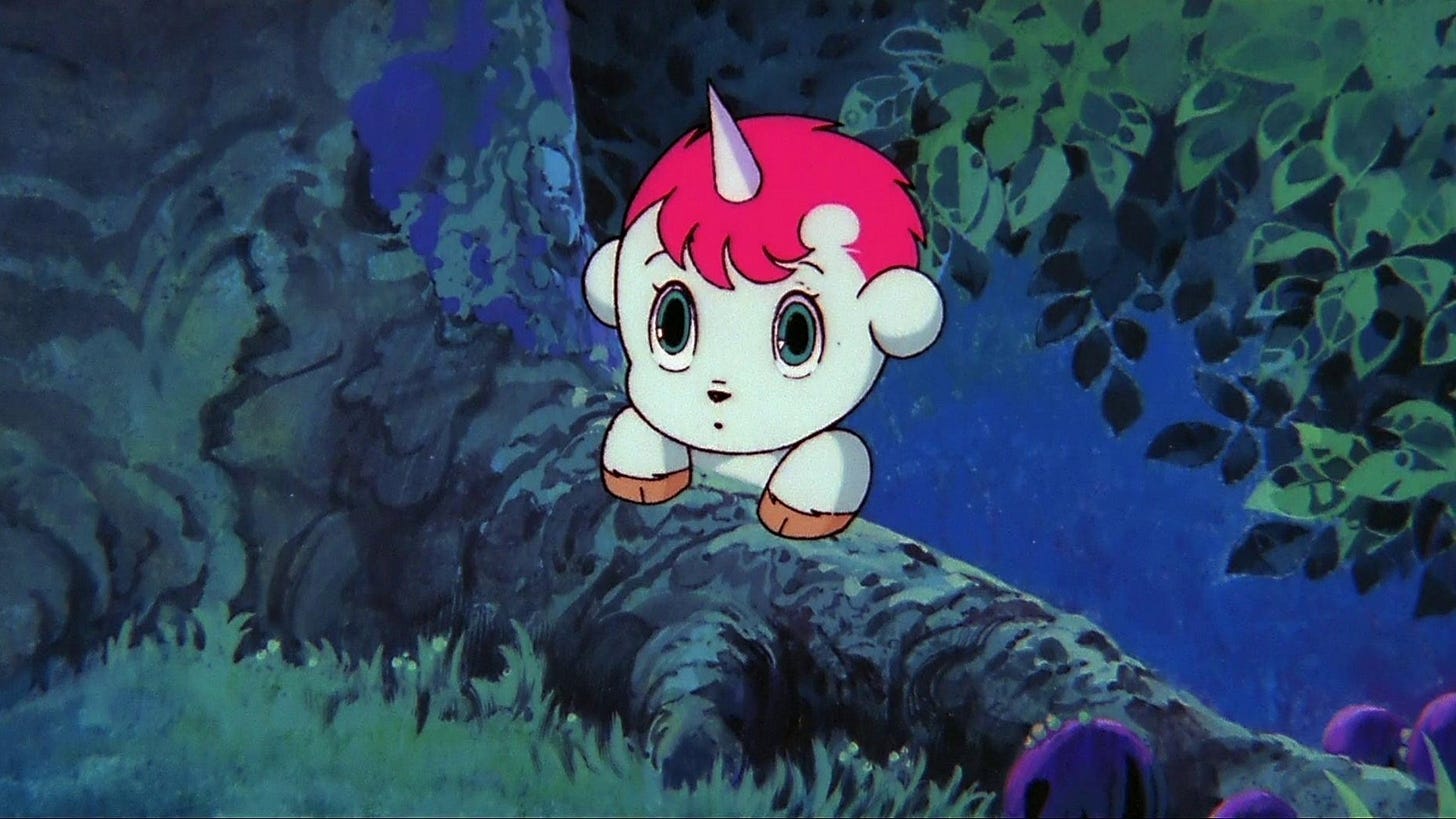One of my most beloved animated films that I used to watch as a child was The Fantastic Adventures of Unico. It’s based on a manga written and illustrated by the legendary Osamu Tezuka (the film adaptation was directed by Toshio Hirata) which was published in the late 1970s.
Unico is an adorable little pink-haired baby unicorn who has the special power of making every creature he comes into contact with lighthearted and happy. The gods above take issue with his abilities (they think only they should be able to influence emotions) and they have Unico banished to The Hill of Oblivion. Fortunately because of Unico’s goodhearted and innocent nature he has help from outside entities, but he still has many trials and tribulations to overcome.
The story is divided into two parts—the first half deals with Unico befriending Akuma-kun (translation “little devil”), a lonely demon who lives on a desolate island. The second half concerns Unico helping a small kitten named Chao realize her dream of becoming a human girl so that she can help her elderly caretaker with daily chores. While on the surface everything seems bright and happy, both of these tales take dark unexpected turns—much more subversive that modern children’s fare tends to be.
This is something I miss from the olden days of animation because it lends the narrative more gravitas and emotional investment. Unico represents optimism in the face of despair, and though the situations he encounters can be quite grim there is always a light at the end of the tunnel.
Madhouse provided the animation for this film and it’s spectacular. The backgrounds are lavishly painted with bright colors and gorgeous details and the simplistic yet endearing Tezuka character designs are a joy to look at. The way the characters move around and emote is so expressive and creative and the animation is smooth and silky. It also has the weird neon “’eighties vibe” going on which adds another layer of quirkiness to everything.
Tezuka has stated that he used Disney as an inspiration to his own work and you can see the influence in the way the characters eyes look and some of their design elements. My favorite sequences are when The West Wind and The Night Wind take flight—they are personified as otherworldly looking women complete with long flowing robes and ethereal forms.
There is a lot of music throughout the film but it’s not necessarily a musical. It’s a mostly orchestral production with some synthesizer elements thrown in as well. Masahiko Sato (Belladonna of Sadness) composed the score and most of the songs are preformed by the voice actors for the characters. I have seen both the Japanese and English versions of this film and while the dub isn’t terrible, I much prefer the Japanese language (though some of the voices can get a little shrill at times.).




Loved this one as a kid. I still have the tape my parents recorded off tv at the time and watched it with my daughters when they were small. Really cool you covered this!
Have you ever watched the 80’s very dark and bleak kid’s anime movie “Ringing Bell”?